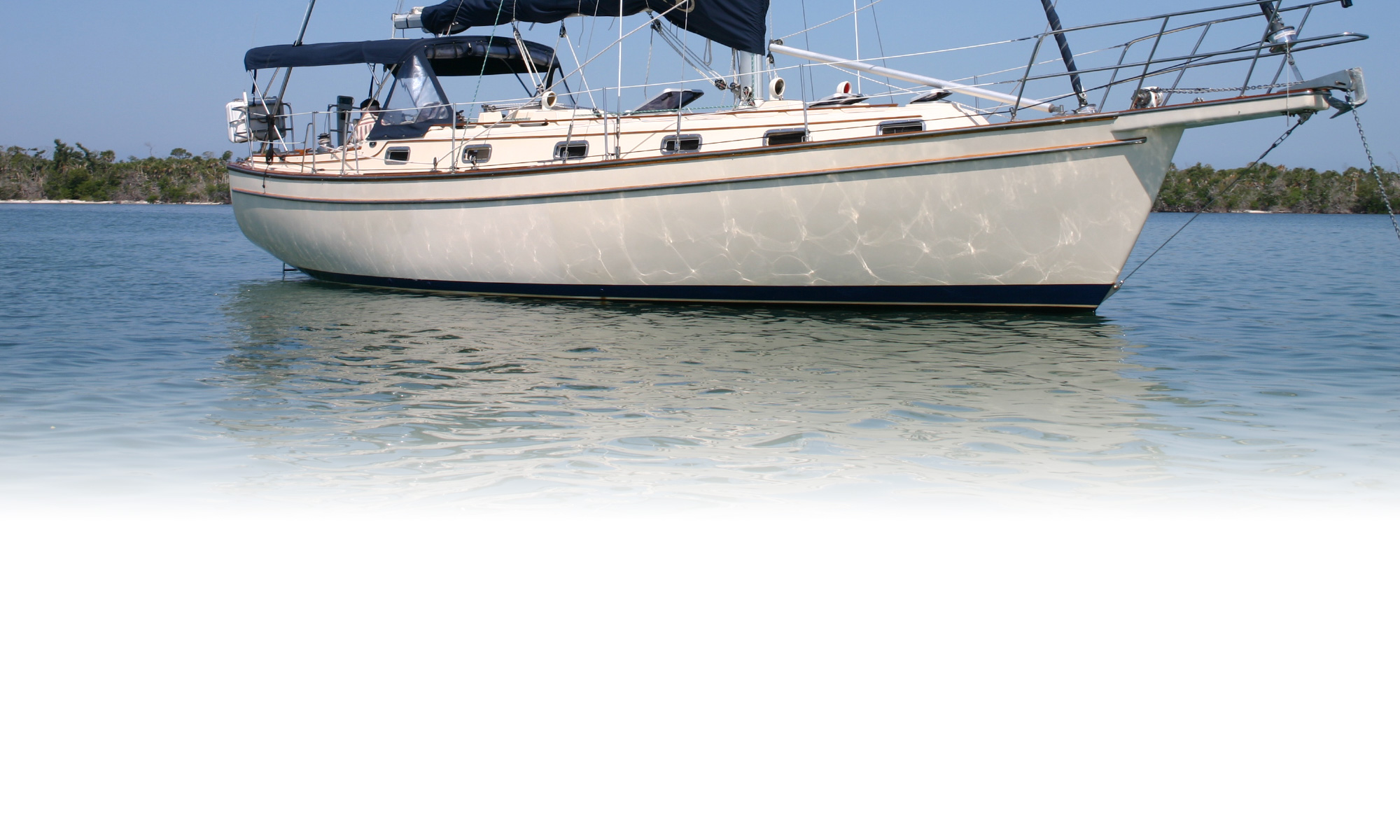The four rudder types are: full rudder, spade rudder, skeg rudder, and outboard rudder. We will discuss the advantages and disadvantages of each.
Full Rudder
The full or full keel rudder is at the aft end of a full length keel. The keel-rudder runs along the entire length of the bottom of the boat’s hull. This full length rudder is safe and more resistant to damage. The leading edge of the keel protects the rudder from debris. The full rudder is a trademark of offshore cruisers like Cabo Ricos and Wetsails. Damage may be avoided even when grounding. The boat will rest safely on its side until the tide returns and lifts the boat off the shoal.
Spade Rudder
The spade rudder rests below the transom separate from the keel. A spade rudder turns easily because the water rushes both against its fore and aft edges – good when using a tiller. There’s less wet area so the spade rudder is fast. The spade, along with partial spade rudders are becoming popular in many sailboat designs.
Skeg Rudder
Compared to other styles, the skeg rudder is modern in safety and performance and popular on current production boats. The skeg rudder is similar to a spade keel and is fast. The skeg rudder’s fore edge is protected by a “faux keel” that extends from aft of the hull. Hylas yachts are known for their skeg rudders.
Outboard Rudder
Outboard rudders are used on smaller boats. They are attached to the transom of the boat, hanging off the stern. Racing prams employ outboard rudders. They are also easy to jerry rig as emergency rudders. Any long piece of metal and flat piece of wood, as in a cabin door, can work.
Each type of rudder has its advantages and disadvantages. Most importantly, inspect your rudder regularly and carry a spare.
Foss Foam products can create a replacement rudder for your sailboat. Contact us for more information.
